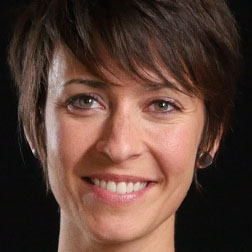For the past few years, when it comes to doing any kind of work with teams and organizations, I’ve been increasingly drawn to the emergent and turned off by the planned and premeditated. To me, emergent potential is all about the possibility to disarm, reveal, become unapologetically candid, and fearlessly transparent. It is raw and alive. On the other hand, the premeditated feels like an outdated and outmoded clinging to a sense of control-based power that is strategic, transactional, dulling, and suffocating.
This has been an embodied experience for me. It has been a feeling of confusion and frustration in a meeting where I’m showing up with my consultant hat on with other people with their consultant hats on and we’re meeting a bunch of people with their chief-this and executive-that hats on. Throughout the conversation it feels like we’ve all been coated in layers upon layers of this invisible resin made up of our respective titles, the roles we play in our lives, the ways we ignore our suffering, disown our outrage, dull our courage, and wear the social conditioning we’ve endured. The resin is there to preserve all of this, keeping out the unpredictable and keeping in the personal, private, inner life.
Except, over time, I’ve been actively working at dissolving my layers of resin, many have gone now and I am left much more interested in other information, dynamics, curiosities, sensations arising in my experience and getting communicated between people. Have you ever felt the underlying anxiety that pervades a group operating through layers of resin? Or how that experience feels lifeless? Have you ever been perturbed by how things feel polished at the expense of truth?
When I’m in these meetings, this is what I want to explore. But these more intimate facets of reality are usually already ‘off-limits’ implicitly—with assumptions about professionalism, task-oriented mentalities, and conditioning around performance evaluation all mutually reinforcing this avoidance of intimacy. In these contexts, it either would be way too risky or considered a meaningless distraction to point everyone’s attention to these tiny, subtle, electric-truth particles shooting between people and divulging how they really feel or exposing a desire or revealing intimate thoughts. For most of my professional life, often I was the only person on the team who thought these subtle dimensions of our experience actually mattered. And oh boy do I believe they matter!
I want to be hyperbolic here and say this emergent reality matters more than anything, and I believe paying attention to it is a key to our complex, wicked, and seemingly intractable problems. Despite our “always-on” and ‘highly connected” culture, we are largely disconnected from our bodies and from the planet. When we’re disconnected in this way, no matter how hard we try, we won’t be able to find true and lasting ways to address the complex, deeply interconnected challenges we face because we have not yet come to thrive in our own deeply human complexity and interdependence. And while it might seem small, these subtle intrapersonal and interpersonal dynamics are the way into this deeper connection – with ourselves, each other, and the wider whole.
And if you’re not sure what I’m talking about, just reflect on how power dynamics, misalignment, or office politics feel. Even if you can’t see them or hear them, you know they’re there and they’re powerful. Fundamentally, these layers of self-protecting resin keep us from not only our own direct embodied experiences (you could say, our humanity or our transpersonal nature) but also the genuine and real-time relating that we are so very desperate for as a society.
In the face of this cultural desperation, many consultants I know offer the speed-and-complexity-innovation-and-problem-solving argument. This is fundamentally a behavioral argument, because it is oriented to our doing. What I’m more compelled by is our ability to radically be together. Consider how a leader who is willing to be moved to tears in front of others galvanizes the psychological safety for the group. Or how when colleagues who are hurting one another are able to take responsibility for it in the presence of the whole team, a clearing is created for everyone, releasing tension and freeing up energy. These are more powerful set points than any group process or new methodology could be.
Furthermore, because of the way work totally dominates and organizes our lives in the West, this self-protecting resin doesn’t just have one layer. Rather, for many, it is resin shield, upon resin shield – the roles, expectations and projections of what it means to be at work, a parent, a spouse, a friend, etc. We live inside these numbing layers, never quite getting into or being willing to expose the real, soft, tender, raw, powerful, loving, audacious, human core of being that is dying to get out.
And despite all of the “bring your whole self to work” rhetoric that has emerged over the past decade (a vital moment in my mind is the financial crisis of 2008, when so many people lost their jobs and so many other people took on more demanding combined roles inside of organizations to make up for it) the onus has remained on the individual professional to figure out — in their own time, in their private sphere, outside of work — how to show up with more of themselves inside of systems and cultures that don’t really know how to reconcile that.
I’ve spent the past several years working as an organizational consultant and the rub here is that on the one hand, I believe that work is the most promising place for vertical development, (inter)personal growth, fulfillment, and experiences of true community. On the other hand, it seems least likely to happen there unless we begin to radically get real and start to bring the private, intimate, tender stuff out into the light (which people just aren’t expected to or incentivized to do at work).
Over the past several years I have witnessed (and indeed been a part of) how organizations deal with culture and team issues in three primary ways:
- Through abstraction: The creation of new organizational values, engagement surveys (ie data collection), definitions of culture, etc.
- Through bonding: Hosting a new ‘fun’ event or team activity (ie happy hour)
- Through individuals: The introduction of a new learning or development opportunity that services individuals primarily but done in a group setting (ie ‘discover your personal purpose’ or ‘identify your values’)
While this is all well and good as a start, these approaches will ultimately miss the mark. The most notable miss is that these approaches don’t actually address whatever the issues are in real-time with the people who are experiencing them, or anyone who is implicated in that experience and its impact on work that needs to get done. It is awesome is that people can tell when the energy is dragging, morale is low and change is needed. It is just unfortunate that there aren’t more people inside of organizations that are skilled at working with the real-time beingness of those uncomfortable experiences such that they can actually become liberated and transformed.
This courage to be unpremeditated is what I believe matters, not because it makes people feel good, but because this is the way humanity has to evolve. There is not enough genuine relating going on and it is killing us (how many people feel dead at work?), our society, and our planet. If we have any fighting chance at really addressing our shared challenges we must do it together and we must do it from our humanity, not in spite of it.
There is this thing in meditation that at some point, you have to actually drop the meditation itself. Because otherwise, all you’re doing is training yourself to use a strategy to do meditation. The point isn’t to meditate, the point is to change how you live your life. The thing with organizations, and goals, and roles, and all of that is that we’re just continually training ourselves to play a role, be in the future, and do the thing we’re supposed to do. And in our current era, where will that get us? There is an urgency here that I hope you’re feeling.
What I’ve embarked on with some brave, self-aware, intelligent, and cutting-edge teams is first and foremost learning a new way of being together – not simply doing together. That is to say, the work is informed by the emergent potential of being, rather than conflated with the predetermined doing. For example, we don’t work with goals, or a plan, or a road map, or anything like that. The work is nonlinear, and it isn’t always clear where we’re headed. We have a commitment to servicing the moment, what is arising in real-time, exploring the multiple truths in the room, and following what comes. In many ways, uncertainty is at the forefront and we’re guided by some deep intuitive force that is wanting to mature, break free, expand, and/or speak out. It is learning how to be with all of experience and allowing that to light the way. Everyone is shedding their resin shields one step at a time. This is not easy to ROI-ify before we embark. The way that this has started to show up for me in the organizational context is through what I’ve been calling Emergent Facilitation.
And this goes beyond “bringing your whole self to work” (a fraught semantic and imaginal construction to begin with) — this is how the fullness of being can actually emerge dynamically and interdependently. This is how work can actually help us to become more whole—first, we have to be willing to let it. And there are simple ways that facilitators and teams can begin to shed the limitations of relating in self-protective ways. Here are a couple of experiments you can try in your next few meetings:
- Simply inquire with yourself, directing the inquiry to the inside of your torso (heart, belly, or just below your sternum), and just see what answers come (don’t think about it with your head): “How does this meeting feel?” then “How does this meeting feel for us, the team or group?” then “What needs to happen or be said that isn’t?”
- Pay attention to how often people speak in the first person (I), the second person (We), and the third person (It). Try inviting the group to only speak in the first or second person. Make a note of what happens.
- Begin your meeting with a short grounding practice. Invite everyone to feel their feet on the floor, the way their body makes contact with the chair, and how it feels to arrive in this moment right now. Start with becoming present to yourselves and then each other.
We fundamentally need to learn how to be together, not purely do together. Sure, doing is super important at work. And we’re not quite at the moment of civilizational collapse (some projections estimate we still have about 30 years before that comes to pass) so most of us still have a lot of doing ahead of us. So I’d like to invite you to consider how actually taking a handful of hours a few times a quarter to radically be together – to sit in the discomfort of how we hurt each other, to expose your ideas, desires, fears, and visions to those around you, and to take responsibility for the ways you’ve shown up in the recent past – can radically impact your ability and fundamentally grow your capacity for accomplishing what you need to accomplish. This is in many ways, the process of making the private, inner world public to those that you spend huge amounts of your life with or rely on greatly throughout the year to reach your goals, and where they’re also seen and called to action. This is not simply listening to one another, this is actively grappling with our humanity, and all the emergent potential that comes with it, in real-time to discover behaviors, practices, levels of respect, and ways of being together that invite greater and deeper capacities and our humanity to show up in the days, weeks, and years that follow. It is holographic work, potentially generating insight and expansion across multiple domains, into the past and future. It is holographic in this way because you could uncover a dynamic you’re playing out with a colleague that actually began when you were a child – helping you heal a core wound and support you to stop giving your power away – or give you insight into your familial relationship and how you could become more compassionate with yourself or your partner or child, or propel your path forward by creating connections in your psyche that have until now laid dormant. Learning how to be with others and to genuinely relate can impact your whole life.
I am passionate about the power of the private inner world as we begin to weave it into our organizational contexts. Not at the individual level, but in and through the complex, nuanced, subtle, and unseen group dynamics through which daily work unfolds. As my Buddhist teacher says, there is no private life.
In this moment of our human journey, we need to be increasingly driven by compassion for all. No more private suffering. We are fundamentally social animals, alienated from ourselves and each other. Stuck behind our resin shields. We need each other in order to grow and develop, to achieve greatness, and to solve the wicked problems we’re facing. For many, work is the closest thing they will ever experience to real community. If we don’t make it there, we won’t make it anywhere. So sure you can do it for the good of your bottom line, to become a higher performing team, or you can make yourself vulnerable and empowered in service of our very humanity.
“We may not make it… as a human community, we may be extinguished. Snuffed out by whatever is keener than us, stronger than our survival. But at least, we can go down looking into each other’s eyes.”
~ Joanna Macy
Dara Blumenthal, Ph.D. works with teams, leaders, and individuals to become more powerful, expansive, and unique. Throughout her career as an organizational and executive consultant, Dara has worked across the Fortune 500 on culture, leadership development, and organization design. She is trained as a Sociologist (Ph.D.), Developmental Coach, Integral Facilitator, Critical Theorist (M.A.), and Usui Reiki Master. Dara also teaches meditation and practices in a Tibetan Buddhist Lineage. You can learn more about Dara’s practice at www.darablumenthal.com.



